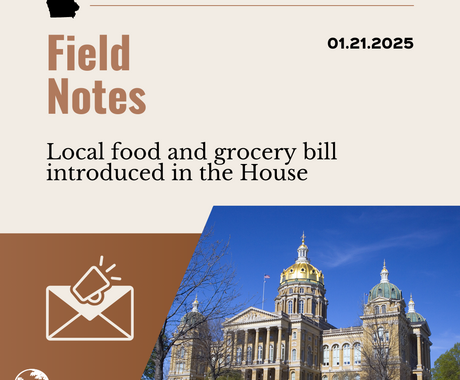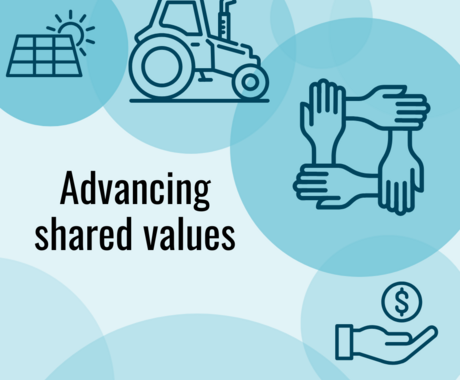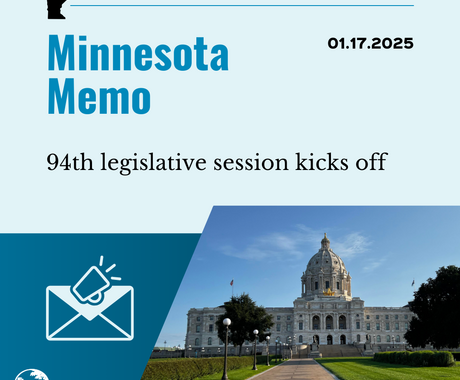The targeted investments of the Inflation Reduction Act (IRA) have real-world impacts that are hard to ignore. Since its passage in August 2022, the IRA has been quietly bringing tangible benefits to Nebraska’s farms, public schools, small businesses, and families. From energy projects to tax credits, this law is strengthening communities.
Investment in state priority action plan
In July 2024, Nebraska’s Department of Environment and Energy was awarded $307 million to implement measures outlined in the state’s priority action plan. The award is an investment in agricultural and energy projects and will allow Nebraska producers to deploy innovative and improved practices, such as adopting advanced livestock waste management, using precision equipment to improve efficiency, deploying regenerative practices, installing solar energy at livestock operations, and making electric upgrades.
These improvements can help producers save money, allowing them to use those funds to capitalize on new opportunities and spur economic growth.
Rural Energy for America Program
The Rural Energy for America Program (REAP), which provides grants and loans to help farmers and rural small businesses invest in renewable energy systems and efficiency improvements, received increased funding through the IRA.
This allowed more farmers to invest in energy saving projects, such as grain producers installing energy efficient electric irrigation motors, which can reduce farm energy usage by more than 60%, or producers or small business owners installing solar panels to save thousands per year in electrical costs. Reduced utility bills free up capital for other investments, such as livestock and equipment.
When small business owners make upgrades with energy-efficient coolers, windows, or doors, they can reinvest the savings from reduced electrical costs and put those funds toward other essential expenses such as wages for employees.
Statewide interest in REAP continues to grow, with applications exceeding program funding. In 2023, the U.S. Department of Agriculture (USDA) received 88 REAP applications for Nebraska representing a total funding request of $7,008,031, 20 times higher than the $337,684 ultimately awarded for 26 REAP projects. The increased number of applications was in line with heightened interest across the nation. Due to the overwhelming response, applications for projects requesting up to a 50% grant were paused as of Dec. 31, 2024. The high demand for REAP showcases the need for continued funding for this popular and beneficial program.
Powering Affordable Clean Energy program
Another program that helps families and businesses in Nebraska is the Powering Affordable Clean Energy (PACE) program, which benefited from $1 billion in IRA funds. PACE is a financing tool that offers low-interest, partially forgivable loans for certain projects if the borrower and project meet the necessary requirements. PACE is designed to assist families and businesses across Nebraska make energy improvements to lower electricity costs.
In August 2024, Sandhills Energy (SE Municipal Solar LLC) was selected to receive nearly $30 million in PACE financing to build eight solar photovoltaic generation facilities totaling 18.72 megawatts of new electric capacity. The facilities will be located in the public power communities of Alliance, Gering, Sidney, Imperial, Ansley, Pender, Crete, and Stuart. This project will create high paying jobs and strengthen the state’s electric grid.
Direct pay provision for schools
Public school administrators have benefited from a direct pay provision in the IRA that enables schools and other tax-exempt organizations to recoup a percentage of the costs to fund energy efficiency projects or purchase energy-saving equipment.
Hastings Public Schools applied for the direct pay credit after installing a geothermal closed-loop heating and cooling system. The project cost was about $3.6 million, with an estimated $1.1 million eligible for direct pay. The geothermal system is anticipated to save the school district between $75,000 and $100,000 annually.
Regional Conservation Partnership Program
The IRA provided more than $4.95 billion to support USDA’s Regional Conservation Partnership Program. This program supports farmers and ranchers by expanding the reach of conservation efforts and climate-smart agriculture through partnerships.
A project titled Pasture Progress: Advancing Regenerative Beef in Nebraska was awarded $21,010,976 to implement regenerative grazing and cover crops on 1,267,300 acres of land in the southern part of the state.
Positive economic benefits for farmers and ranchers following regenerative agriculture practices result from healthier crops, improved yields, and reduced use and associated costs of chemicals.
Statewide impact
These investments are creating stronger farms, improving local economic stability, and providing ways for schools to save money when budgets are tight.
The IRA’s impact on Nebraska is visible in everyday life, helping to ensure a resilient, prosperous future for the state’s rural communities.





